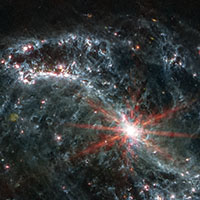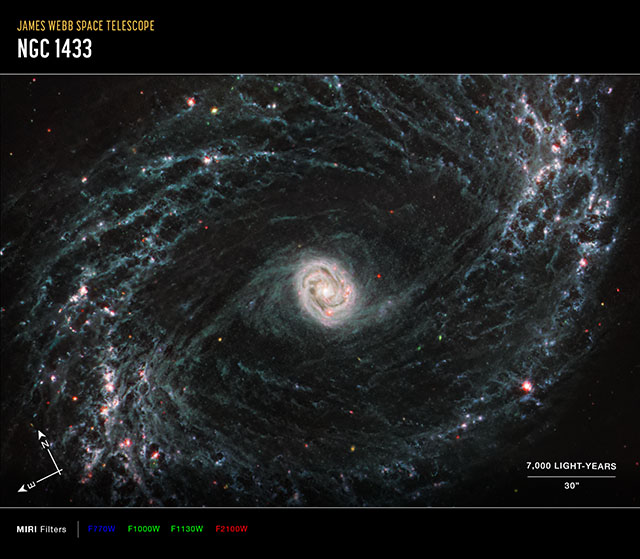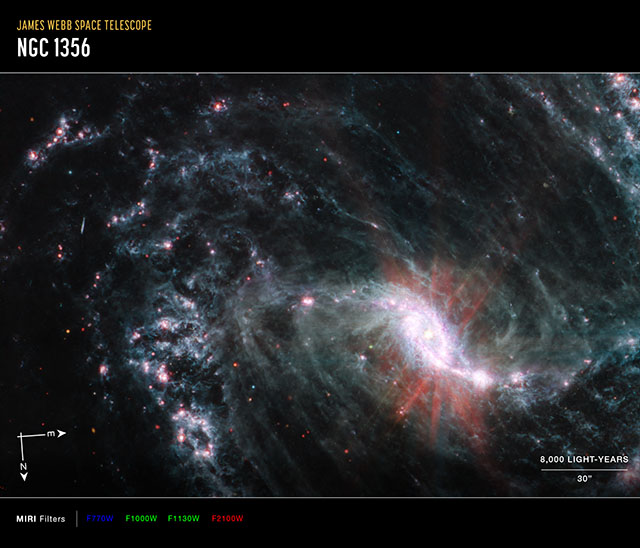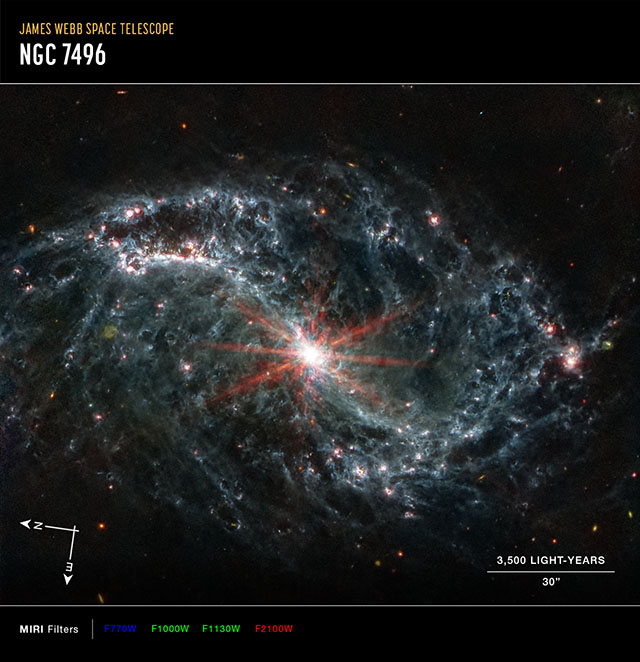Webb and PHANGS collaboration reveal incredible networks of gas and dust in nearby spiral galaxies
posted Thursday, February 16, 2023 at 2:30 PM EDT

Researchers with the Physics at High Angular resolution in Nearby Galaxies (PHANGS) collaboration are performing the largest survey of nearby galaxies using the James Webb Space Telescope. The research includes more than 100 international researchers and is led by Janice Lee, Gemini Observatory chief scientist at the US National Science Foundation's NOIRLab and an affiliate astronomer at the University of Arizona.
The PHANGS collaboration is studying a sample of 19 spiral galaxies. So far, within Webb's first few months of scientific operations, five targets have been observed, including M74, NGC 7496, IC 5332, NGC 1365, and NGC 1433. Per the European Space Agency (ESA), the results are "astounding astronomers."

Credits: NASA, ESA, CSA, and J. Lee (NOIRLab), A. Pagan (STScI)
Images captured using Webb's Mid-Infrared Instrument (MIRI) show the "presence of a network of highly structured features within these galaxies," including brilliant glowing dust cavities and large gas bubbles lining the galactical spiral arms. ESA writes, "In some regions of the nearby galaxies observed, this web of features appears built from both individual and overlapping shells and bubbles where young stars are releasing energy."

Credits: NASA, ESA, CSA, and J. Lee (NOIRLab), A. Pagan (STScI)
Webb's high-resolution imaging capabilities allow astronomers to perform more in-depth research than ever. Webb's infrared imaging can "pierce through the dust" to better observe the target galaxies. MIRI can observe at specific wavelengths (7.7 and 11.3 microns) that allow observation of emissions from polycyclic aromatic hydrocarbons, which are an important ingredient for star and planet formation. "These molecules were detected by Webb in the first observations by the PHANGS program," ESA continues.

Credits: NASA, ESA, CSA, and J. Lee (NOIRLab), A. Pagan (STScI)
With high-resolution imaging, it's possible to study galactical interactions in greater detail, allowing for a more sophisticated understanding of how galaxies evolve. The PHANGS collaboration will create datasets that align with prior observations, allowing others in the astronomical community to take advantage of Webb's work, even if they aren't part of PHANGS. So far, the PHANGS team has published 21 research papers with its initial findings, all featured in a special focus issue of The Astrophysical Journal Letters.
2/ The research team is studying a diverse sample of 19 spiral galaxies, and in Webb’s first few months of science operations the results are already astounding astronomers. pic.twitter.com/8T3xp25XGB
— ESA Webb Telescope (@ESA_Webb) February 16, 2023
Recommended reading: